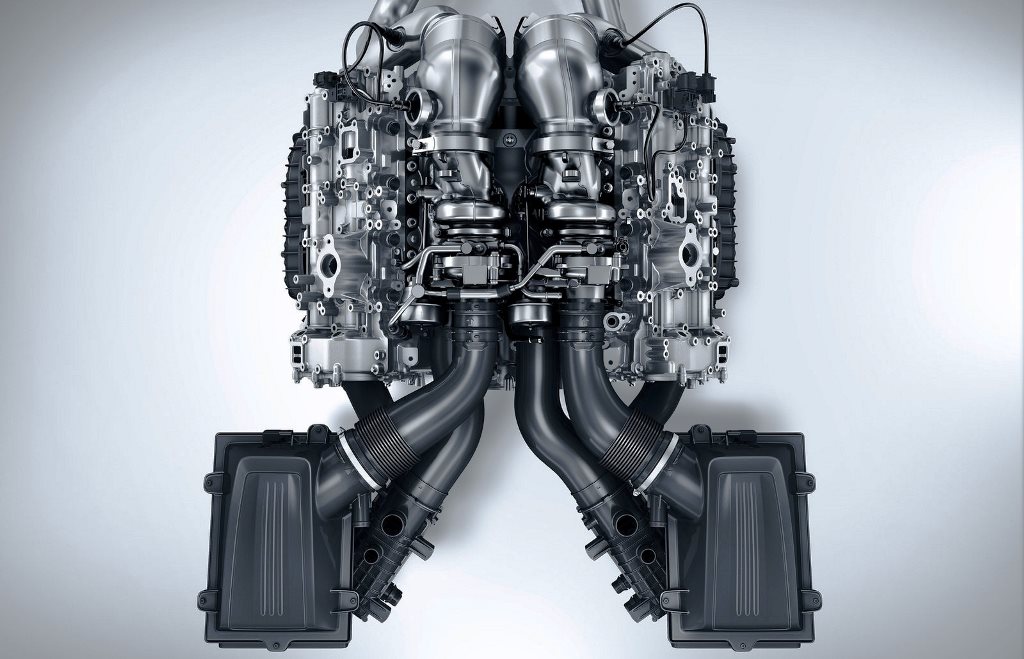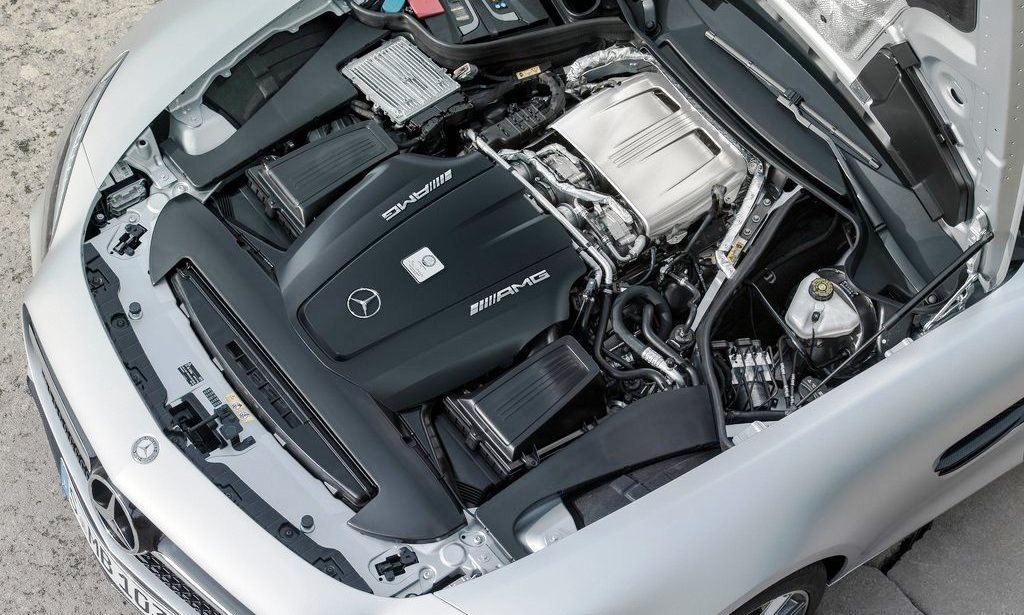New Mercedes-AMG Hot-V Turbo Motor Explained
Turning the V8 inside-out makes a lot of sense … and a lot of power.
The Mercedes AMG GT cars are the first production vehicles to use a “hot V” turbo V8 configuration, where the exhaust, and the turbos, are in the middle of the motor. When you look at the advantages and disadvantages of this design, it’s hard to fathom why it hasn’t caught on before. If you watch the Engineering Explained video, it makes perfect sense.

The turbos are mounted at the top of the motor, with very short, direct four into one headers, so they spool up immediately when you step on the gas. The more direct path and shorter plumbing path means smaller turbos can be used too, while still producing plenty of boost.
Heat rises, so putting the hot turbos up top means less hot air gets into the intake. Getting more heat into the turbos, and subsequently into the catalytic converters, means the engine can run a higher state of tune and still blow clean when the feds test it.
Moving the turbos and plumbing from the sides of the motor to the top also makes the engine package narrower, which means more room for suspension and big, wide wheels and tires without making the car wider.
The Hot V design places the intake plumbing lower, and towards the outside of the engine bay, meaning it stays cooler no matter how much boost the turbos are feeding the motor.
A 4.0 liter motor making over 500 horsepower is very respectable, but even more impressive is how flexible this powerband is. There is plenty of low end torque, with about 90% available from as low as 1,900 rpm, and not falling off until more than 5,500 rpm. Peek power is at only 6,750, so you don’t even have to rev this motor to the moon to get it moving quickly.

Another neat thing about this design, at least in the GT cars, is that the the hood scoop actually has a practical function and isn’t just for looks. When you are moving, cool air coming off the nose is ducted back and directed at the intake side of the turbos, for a cooler, denser charge. Roll to a stop and a flap closes to keep the hot air from traveling that same duct back up to where the air intakes are.
With more companies adopting turbo charged motors, don’t be surprised if you start seeing more reversed, “hot V” engine designs. The advantage outweigh the few disadvantages of the design if you are adding turbo plumbing anyway. It really cost no more to design the engine reversed like this if you are starting from a clean sheet of paper.
